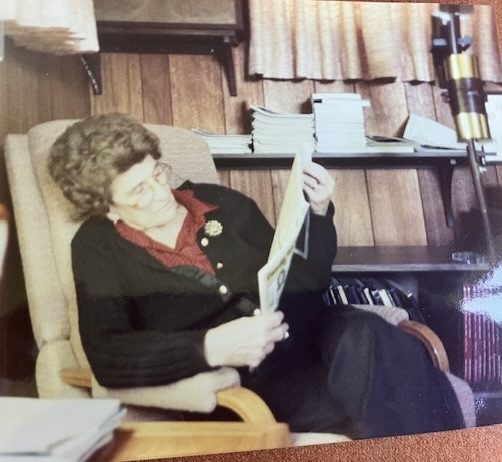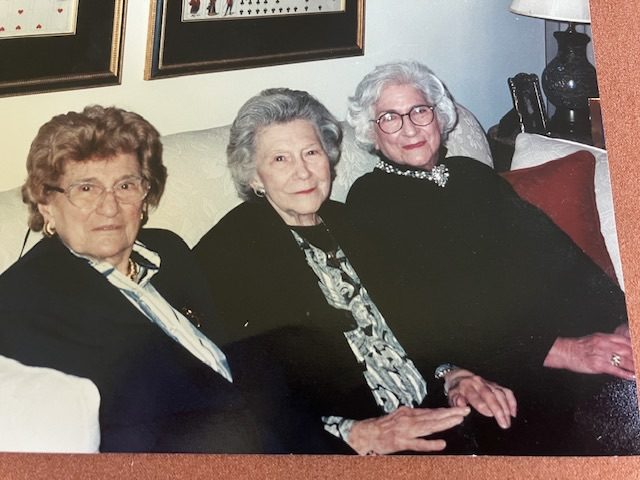Anna Berenson Mayer
In 1929, Superintendent Harry Ginsburg hired 22-year-old Anna Berenson to supervise girls in the Home. The daughter of Polish native Morris Berenson and the former Sarah Robinovich (Rabinowicz)., Anna grew up with her three younger sisters in Bogalusa, Louisiana. She graduated from Bogalusa High School, where she was class valedictorian. When Ginsburg hired her, Anna had graduated from Newcomb College and had taught music in the Biloxi, Mississippi public schools. While working in the Home, she attended night classes at Tulane University where she used her daily experiences as the basis for her thesis, “A Study of the Jewish Children’s Home,” to earn her master’s degree in social work in 1933.
Enhanced by her insider’s view, Anna’s thesis explored the extent to which a congregate childcare institution like the Home could approximate family life and satisfy the individual needs of the children under its care. “Even the most fervent advocates of child-placing in families . . . do not demand that all institutional care of even normal children cease, nor do theyask that all normal children shall at once be placed in private families,” wrote Berenson, acknowledging the growing trend toward foster care. But even if appropriately placed in an institution, she added, the Home should “steadily and systematically” prepare each child to return to a family home, preferably their own rehabilitated home.
In Berenson’s words, “The Jewish Children’s Home attempts to give the child a home which will be to him a haven of security, a place where he is wanted, loved and protected from those experiences which adults alone should be called upon to face.” However, Berenson asserted, determining the extent of the Home’s success required a comprehensive, qualitative evaluation of the results achieved, possibly through a case study of both the children in the Home and those discharged over at least the last decade. Ginsburg took Berenson’s recommendations to heart and assigned her to conduct a “case review” and “analysis” of each current child’s records.
The case review approach reaped prompt results. Ginsburg began urging the Home’s admission committee to decline to admit and to promptly discharge “children for whom any decent family care can be provided,” which resulted in reducing the population from 136 in 1933 to 117 in 1934.

Anna Berenson, Tulane Jambalaya, 1927

Anna Berenson’s thesis for her master’s degree in Social Work, Tulane University, 1933.
Anna’s time in the Home laid the foundation for her lifelong career in social work, including a doctorate from Columbia University and years teaching there, and at New York University and Rutgers. Her lead co-authorship of a 1965 monograph for the Ford Foundation, “Day Care as a Social Instrument,” helped shape the federal Head Start Program. The first Head Start director, Dr. Julius Richmond, said Anna’s work “became a Bible for me virtually.”
Active in civic affairs, too, Anna served as a board member and officer of the New Jersey Mental Health Association. In 1983, she was selected to head a newly formed Governor’s Committee on Children’s Services Planning to make recommendations on children’s issues to New Jersey Governor Thomas H. Kean.
At her death in 2000, according to her obituary in the New York Times, she was survived by her husband of more than five decades, Nathan Mayer, her son, Steven, two grandchildren, and two sisters. Read Drew University President (and former N.J. Governor) Kean’s 2001 tribute to Anna here.
Sara Berenson Stone, a grand dame of New Orleans philanthropy, continued her cousin’s legacy of service to the Home. Sara served as president and longtime board member of the Home’s successor, the Jewish Children’s Regional Service, and proudly preserved a copy of Anna’s 1933 master’s thesis.

Dr. Anna Berenson Mayer, c. 1992. Courtesy of her nephew, David Forsyth.

Anna Berenson Mayer, left, with sisters, Florence Marx and Ruth Forsyth, c. 1998. Courtesy of Anna’s nephew, David Forsyth.
